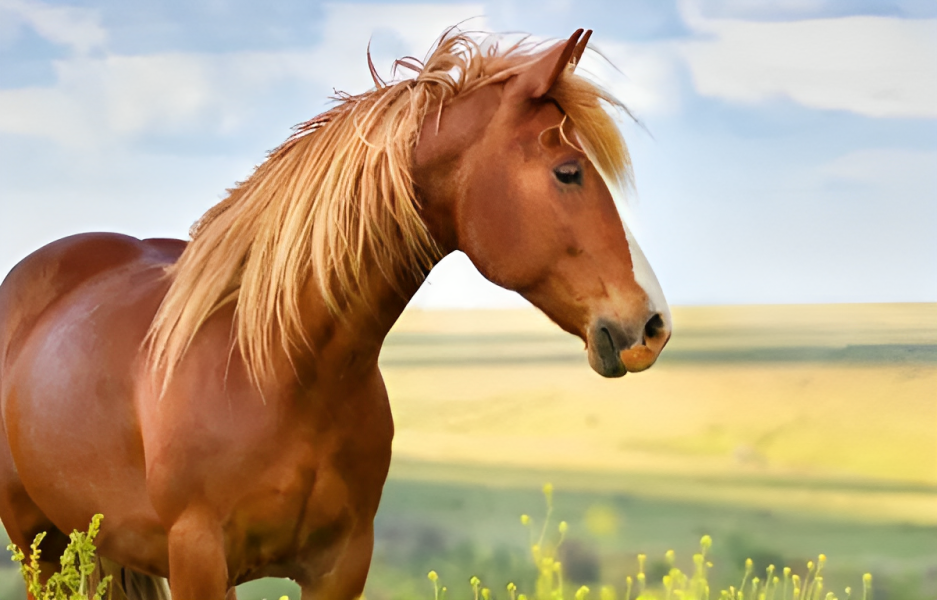Horses, with their majestic presence and mysterious behaviors, continue to captivate humans. Among the many questions that arise, one particular query revolves around the sleeping habits of these magnificent creatures.
In this article, let’s explore the sleeping patterns of horses and other facts about their sleep cycle.
Understanding the Evolutionary Quirk:
Horses, as prey animals, have a storied evolutionary history that greatly influences their behavior, including their unique approach to sleep.
The open plains where they first evolved demanded a survival strategy that allowed them to rest without compromising their ability to detect and escape from potential predators.
The ability to sleep standing up, a behavior that has been retained through generations, plays a crucial role in their survival instincts.
Anatomy of Equine Rest:
The mechanics behind a horse’s ability to sleep while standing up lie in a specialized system known as the stay apparatus. This arrangement involves a complex interplay of muscles, ligaments, and tendons. This allows horses to stand on three legs while giving the fourth a much-needed break. This unique adaptation ensures that horses can rest without compromising their ability to flee from danger at a moment’s notice.
Sleep Cycles and Stages:
Similar to humans, horses undergo different sleep cycles and stages, each serving a specific purpose in their overall well-being. While slow-wave sleep (SWS) can be achieved while standing, deeper stages, including vital rapid eye movement (REM) sleep, necessitate lying down. This highlights the dynamic nature of equine sleep patterns and the importance of understanding the nuances of their rest.
Duration and Timing of Horse Sleep:
The duration of a horse’s sleep is influenced by a variety of factors, including age, health, and lifestyle. On average, horses sleep for approximately 5 to 7 hours a day, with variations depending on individual needs. Foals, in their developmental stage, may require longer periods of sleep for proper growth. The significance of REM sleep, involving around 20% of a horse’s sleep, becomes apparent when considering its role in memory formation and mental health.
Sleeping Positions and Environmental Influences:
A horse’s choice of sleeping position is a dynamic response to its perception of safety in the environment. The upright stance, often adopted when horses feel vulnerable, allows for quick reactions and heightened alertness. Conversely, the act of lying down signals a sense of security and comfort.
Dispelling the Myth of Open-Eyed Slumber:
Contrary to a prevalent misconception, horses do not sleep with their eyes fully open. The state of their eyes during sleep depends on the sleep stage. While standing and in the slow-wave sleep stage, horses exhibit a characteristic half-closed eye position. This, however, changes during the deeper REM sleep stage, where their eyes are fully closed.
Implications of Sleep Deprivation:
Understanding the intricacies of equine sleep becomes crucial when considering the potential consequences of sleep deprivation. A horse deprived of sufficient rest may exhibit signs of tiredness, including sluggishness, excessive daytime drowsiness, and reduced responsiveness. Sleep-deprived horses may also display irritability, aggression, or apathy, potentially leading to increased susceptibility to diseases such as respiratory infections or gastrointestinal disorders.
Factors Influencing Sleep Deprivation:
Several factors can contribute to sleep deprivation in horses; this includes stress, isolation from the herd, changes in environment, pain, and a lack of adequate sleeping space. Recognizing and addressing these factors are essential in promoting a healthy sleep environment for horses.
In conclusion, the sleeping habits of horses unveil a captivating blend of evolutionary adaptations and physiological intricacies. The ability to sleep standing up showcases the remarkable ways in which these animals have evolved for survival.
Understanding this deepens our appreciation for these animals. Additionally, it also focuses the importance of providing them with an environment that aligns with their natural sleep patterns.
